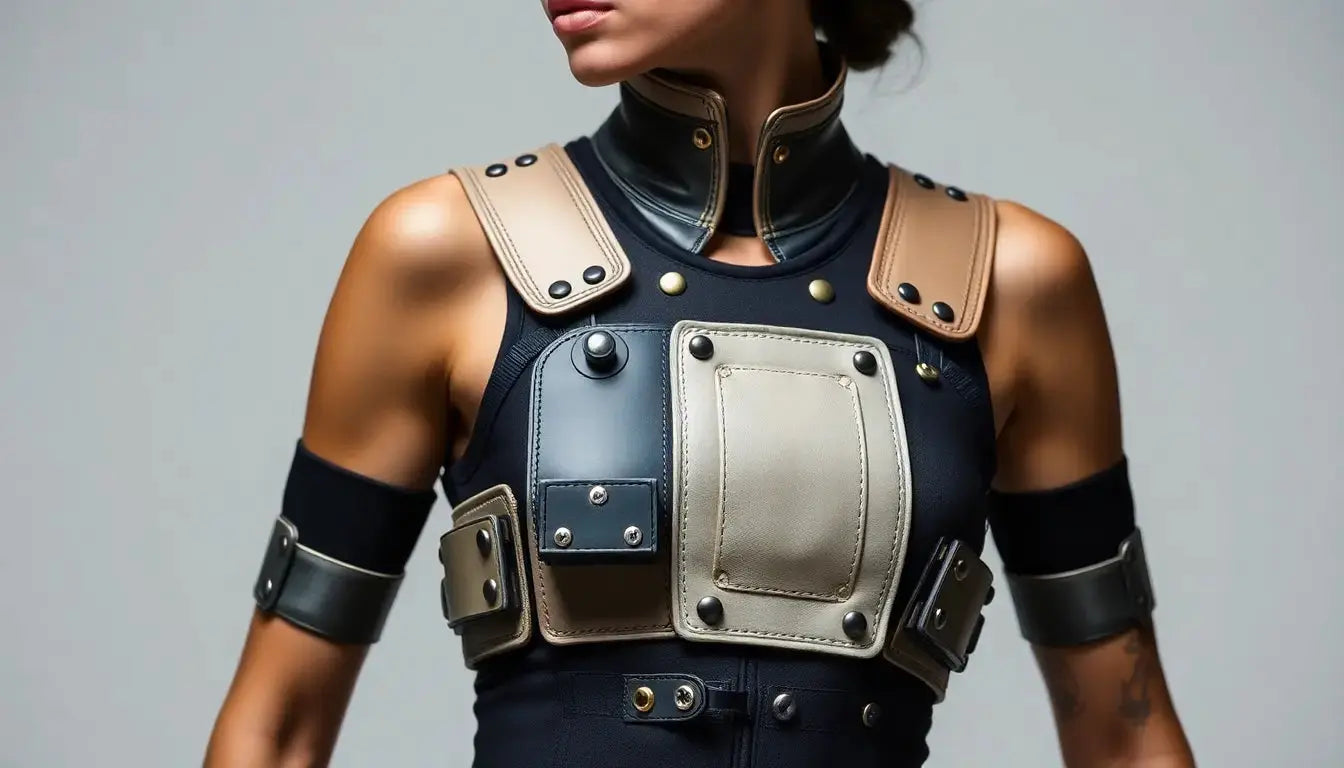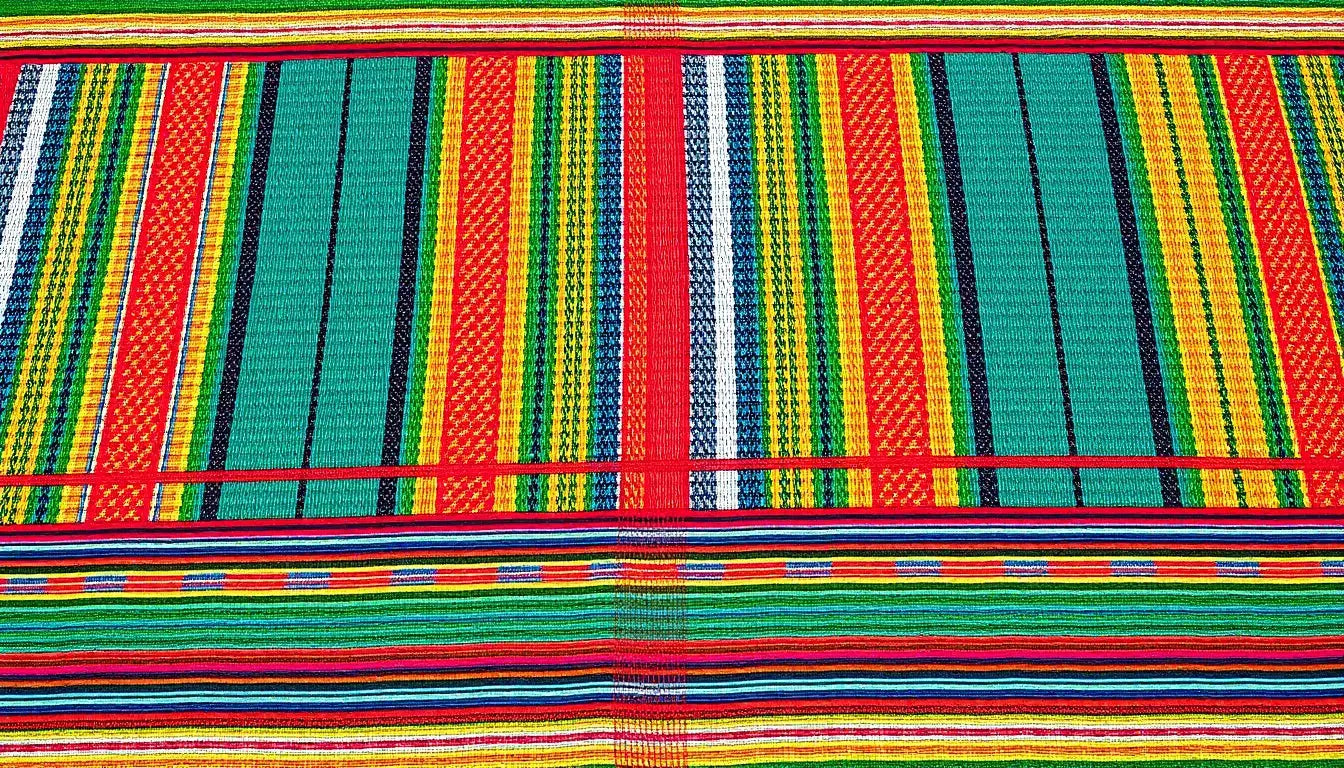
Modular Apparel for Dancehall Streetwear: A Designer’s Guide to On-Demand Microfactories, Local Makers, and Global Scale
Introduction
Dancehall streetwear sits at the intersection of performance, identity, and urban culture. In 2025, designers who combine modular apparel principles with on-demand microfactories and local maker networks can create resilient, authentic brands that scale globally without losing community roots. This extended guide digs deep into how to design, prototype, produce, market, and scale modular dancehall collections. It includes practical checklists, costing examples, QA protocols, marketing playbooks, legal considerations, and an implementation timeline to move from concept to sustainable global drops.
Context: Why Modular Design and Why Now
- Modular apparel reduces inventory complexity by allowing many visual and functional variants from a small set of base pieces.
- Demand for flexibility and personalization has grown; modular pieces let wearers adapt looks for day, night, performance, or studio practice.
- Microfactories and localized production lower lead times and carbon emissions while enabling small batch economics for experimental streetwear drops.
- Dancehall culture values rapid iteration, collaboration, and visible authenticity; modular design supports co-creation with dancers, DJs, and local creatives.
Design Foundations for Dancehall Modular Apparel
Begin with a set of design rules that maintain performance, visual identity, and modular interoperability.
- Define core silhouettes: pick 3 to 5 base garments to anchor the collection, such as a high-rise pant, cropped jacket, utility vest, performance top, and an oversized hoodie.
- Standardize module interfaces: create a small number of compatible attachment interfaces so modules can be shared across silhouettes. Example interfaces include a 3 cm snap tape channel, a low-profile zip rail, and a magnetized leather tab with safety retention.
- Prioritize movement: ergonomics matter. Include gussets, articulated knees, and drop-crotch engineering where needed to preserve dance mobility.
- Make maintenance easy: design modules that can be removed for washing and repaired locally.
- Think in layers: design for both thermal adaptability and stylistic layering, enabling rapid costume changes on stage or in the street.
Module Types and Use Cases
- Visual Modules: color panels, holographic panels, embroidered patches, reflective strips for night visibility.
- Functional Modules: cargo pockets, hydration pockets, ventilation panels, sound pockets for wireless packs, LED or reflective modules for stage effects.
- Performance Modules: reinforced knee patches, grip surfaces, shock-absorbent hip pads for floorwork.
- Identity Modules: name tags, crew badges, limited artist collab patches that can be snapped on for events.
Attachment Systems: Options, Pros and Cons
- High-quality zippers: durable and intuitive, good for larger panels. Pros: secure, market familiarity. Cons: heavier, seam complexity.
- Snap tape systems: fast to attach, lightweight. Pros: low cost, quick swaps. Cons: wear over time, limited load capacity.
- Magnetic fasteners: elegant, quick, and silent. Pros: good for aesthetics and quick swaps. Cons: potential interference with electronics, higher cost.
- Hook-and-loop with reinforced backing: versatile and adjustable. Pros: scalable sizes, cheap. Cons: attracts lint, can wear and lose grip.
- Hybrid systems: combine a zipper for structural support and magnetic or snap interfaces for alignment and ease of use.
Materials and Trims for Dancehall Performance
Select fabrics and trims that balance breathability, durability, movement, and showmanship.
- Stretch woven blends: combine woven stability with elastane for mobility in pants and jackets.
- Technical knits: moisture-wicking and quick-dry for tops and performance layers.
- Ripstop and cordura reinforcements: for high-friction zones like knees and hems.
- Reclaimed textiles: make striking panels from upcycled denim, jackets, or banners for unique aesthetics and sustainability credentials.
- Reflective trims and glow-in-the-dark inks: for evening performances and safety.
- Hardware: choose corrosion-resistant zips and snaps, consider stainless or coated finishes for longevity in humid climates.
Prototyping and Digital Tools
Modern digital tools accelerate fit testing and allow multiple iterative cycles before wasting materials.
- 3D design and simulation: use CLO3D or Browzwear to prototype module fit, movement, and visual layering; iterate quickly on interface alignment.
- Digital patterning: maintain a library of graded patterns and interface templates to speed up production across sizes.
- Rapid physical prototyping: combine laser cutting for precise panels and CNC for material prep with hand assembly or small-scale automated sewing for the first physical samples.
- User testing with motion capture or smartphone video: test with dancers performing common moves and quantify fit issues that arise with certain modules.
Tech Pack Template Essentials
Prepare a robust tech pack to communicate with microfactories and makers.
- Front and back flat sketches of base garments and each module.
- Module interface drawings with exact dimensions and tolerances for attachment rails, snap spacing, and zipper endpoints.
- Materials list with supplier references and swatch IDs.
- Hardware specifications with part numbers and finish details.
- Stitch type, stitch density, and reinforcement instructions for load-bearing points.
- Graded size chart and tolerance notes for seams and attachment positions.
- Assembly sequence and estimated minutes per unit for capacity planning.
- Packaging and labeling details including care instructions for modular washing and reattachment guidance.
On-Demand Microfactories: How They Fit the Model
Microfactories combine small footprint automated equipment and skilled labor to produce small runs at speed. They are particularly suited to modular streetwear because modules and base garments can be produced as separate lines and combined at final assembly points.
- Advantages: low MOQs, fast turnarounds, local production reduces logistics overhead, supports regional drops and collaborations.
- Automation sweet spot: digital cutters, automated pressing, and single-operator sewing cells for repetitive tasks; skilled hand-finishing for detailed work and custom modules.
- Integration: choose microfactories with APIs or simple EDI capability to connect orders directly from your commerce system to production schedules.
Working with Local Makers: Collaborative Playbooks
Local makers provide authenticity and bespoke finishing. Use them for co-designed modules, unique finishes, and community-driven projects.
- Run co-creation sessions: invite dancers and makers to prototype sessions to validate module placement, usability, and visual impact.
- Allocate maker tasks smartly: use local makers for embroidery, leatherwork, hand-finishing, and limited edition modules; microfactories handle bulk base production.
- Compensation and transparency: build fair pay models, time-and-materials contracts for bespoke work, and statements of social impact to use in marketing.
- Knowledge transfer: document maker-specific techniques and incorporate them into technical packs where repeatability is required.
Quality Assurance: Tests, Protocols, and Acceptance
Keep product quality consistent across distributed production with clear acceptance criteria and testing protocols.
- Attachment durability: run repeated attach/detach cycles, specifying a minimum cycle count, typically 1000 cycles for premium streetwear modules.
- Wash and care testing: machine wash, hand wash, and dry-clean tests per material guidance. Attachments must remain secure after specified cycles.
- Abrasion and tensile testing: use standard rub tests and seam tensile limits to define acceptance thresholds for knees, hems, and straps.
- Colorfastness and crocking: ensure panels and prints meet standards so colors don't bleed onto surrounding fabrics.
- Performance testing on real dancers: field test with 20 to 50 users performing curated movement sets to uncover fit or attachment failures.
Sample Costing Model and BOM Example
Below is a simplified example for budgeting. Values are illustrative and reflect 2025 market dynamics.
- Base pant BOM:
- Fabric: technical stretch woven, 1.8 m at 6.50 per m = 11.70
- Trim: zipper, snap tape, thread, labels = 3.50
- Labor: cutting and sewing at microfactory = 8.00
- Overhead and fulfillment allocation = 2.80
- Base pant total cost = 26.00
- Module costs:
- Simple visual panel: fabric and snap tape, labor = 4.00
- Functional pocket module with lining and zip = 7.50
- Reflective LED strip module with connector = 18.00
- Suggested retail and margin strategy:
- Base pant MSRP = 120.00 (gross margin approx 78%)
- Visual module MSRP = 25.00 (bundle discount with pant to drive ARV)
- Functional module MSRP = 49.00
- Premium tech modules priced higher with limited runs and artist collaboration premiums.
Pricing and Bundling Strategies
- Component pricing: make modules purchasable separately so customers can upgrade over time and brands can build recurring revenue.
- Bundles: offer base plus two module bundles for launches to increase average order value and reduce perceived friction to try modularity.
- Subscription or membership: monthly drops of limited modules to members, creating recurring revenue and community engagement.
- Dynamic scarcity: limited edition modules tied to events or artist collabs to maintain premium segments.
Fulfillment, Logistics, and Returns
Design fulfillment flows that support modular replacement and repairs as core post-sale services.
- Distributed fulfillment: route modules from the nearest microfactory or maker to the customer to minimize shipping times and costs.
- Repair program: provide repair kits and partner with local makers to fix attachments, replacing worn snap tape or reinforcing seams.
- Replacement ordering: allow customers to order individual modules easily and include detailed reattachment guides and short video tutorials.
- Return policies: set reasonable return windows and restocking rules for used modules; consider credit for modules returned in good condition for resale.
Marketing, SEO, and Content Strategies
To rank highly on SEO and to reach dancehall audiences, use a combined content and community strategy.
- Keyword strategy: build content targeting long-tail keywords and user intent. Example keyword clusters include modular dancewear, dancehall streetwear pods, convertibles for dance performance, on-demand microfactory fashion, and local maker collaborations.
- Content types:
- How-to videos: swapping modules, stage-ready configurations, cleaning and care.
- Movement demos: filmed with dancers showing durability and fit under realistic conditions.
- Behind the scenes: maker spotlights, microfactory tours, and collaboration stories that emphasize authenticity.
- SEO-optimized long-form articles: educational guides, FAQ pages, and durability reports that earn organic search traffic.
- Social strategy: TikTok dance challenges with signature modular swaps, Instagram reels for styling, and YouTube deep dives on design and sustainability.
- Community activation: pop-ups with hands-on customization, repair clinics, and co-design sessions with local crews to build word-of-mouth.
Content Calendar Example for a Launch Quarter
- Week 1: Teaser content and maker spotlight. SEO post: introduction to modular dancewear.
- Week 2: How-to video showing module attachment in 60 seconds. Email to early access list.
- Week 3: Behind-the-scenes microfactory tour video and blog post with detailed tech specs for the base pant.
- Week 4: Influencer seeding and TikTok challenges; limited pre-order window opens.
- Week 6: Launch drop, livestream Q&A with designers and dancers. Post-launch UGC contest.
- Week 10: Post-launch retrospective and community feedback survey; announce next module via maker collab.
Legal, IP, and Collaboration Agreements
Protect your modular system and manage relationships with clear contracts.
- Design protection: consider registered designs or utility patents for novel attachment interfaces; where patents are not viable, rely on trade dress and rapid iteration to maintain lead.
- Trademarks: register brand names and signature module labels to prevent copycats for your higher-value modules.
- Maker agreements: include quality standards, lead times, payment terms, confidentiality clauses, and clear IP ownership provisions for co-created designs.
- Licensing deals: for artist collaborations, define royalties, usage rights, and co-branded product rules explicitly.
Sustainability and Circularity: Metrics and Programs
Modular apparel creates opportunities for measurable sustainability wins when designed into the business model.
- Trackable metrics:
- Carbon per unit: include variable factors for production site, shipping distance, and module complexity.
- Return and replacement rate: lower replacement rates support material efficiency; track module lifecycle to inform remanufacturing decisions.
- Repair rate and repair turnaround: measure customer retention from repair services and economic viability of repair flows.
- Programs:
- Module take-back: offer credits for returned modules in good condition for resale or remanufacture.
- Local remanufacture hubs: partner with makers to refurbish and resell returned modules regionally.
- Material passports: include clear labeling for each module so repairers and customers know fiber content and care instructions.
Scaling to Global Markets: Architecture for Distributed Manufacturing
Growing from local drops to global reach requires a networked approach that balances standardization with local flavor.
- Standardize module interface specs across the network so parts remain compatible regardless of production location.
- Onboard microfactories with rigorous QC and environmental standards; stagger onboarding regionally to maintain quality control.
- Use regional demand signals to trigger production locally and reduce cross-border shipping costs and tariffs.
- Maintain central IP and design governance while enabling local collaborators to create region-specific modules that respect brand rules.
Risk Management and Common Failure Modes
- Attachment failure: mitigate by specifying minimum cycle durability and by choosing tested hardware providers.
- Fit inconsistency across production sites: enforce graded pattern templates and sample sign-off before bulk production.
- Supply chain interruption for specialty trims: dual-source critical components and keep a safety stock of standard attachment hardware.
- Loss of brand authenticity at scale: preserve maker stories in marketing and keep limited, region-specific modules to maintain grassroot appeal.
Hypothetical Case Study: Riddim Modular Revisited with Numbers
Scenario and results to illustrate how the model plays out in practice.
- Initial investment: 15k for design, 3D prototyping, and 2 pilot microfactory runs of 150 units each for base and module combinations.
- Unit economics: fully loaded cost per base pant at pilot scale 30; modules average 6 to 9 per unit cost for common modules.
- Pricing: base pant MSRP 120, average modules purchased per order 1.6 at 29 each; AOV 165.
- Sales: first drop 300 base pants sold out in 48 hours, module attach rate 72%, returns 2.5% due to sizing clarifications solved via updated size guide and 3D fit videos.
- Sustainability: regional fulfillment cut average shipment miles by 40 compared to single-country production, and take-back program reclaimed 7% of modules in first 12 months for refurbishment and resale.
Implementation Roadmap: 0 to 12 Months
- Month 0 to 1: Define core silhouettes and three priority modules. Create initial tech packs and select material swatches.
- Month 2: 3D prototyping and movement testing with 10 dancers. Iterate attachments and fit.
- Month 3: Produce 20 physical samples. Conduct lab testing for wash, abrasion, and attachment cycles.
- Month 4: Pilot microfactory run 150 units. Run local maker pilot for 50 bespoke modules and refine QC checklist.
- Month 5 to 6: Marketing pre-launch, build SEO content, seed influencer partnerships, and plan pop-up events.
- Month 7: Launch first consumer drop, collect feedback, and run repair clinics in two cities.
- Month 9: Iterate on modules and release second drop with regional microfactories onboarded for two new markets.
- Month 11 to 12: Evaluate performance, scale logistics, and plan membership or subscription product for module drops.
Templates and Checklists
Keep these reusable lists in your product development playbook.
- Tech pack quick checklist: flats, measurements, materials, hardware, stitch specs, grading, assembly minutes, packaging notes.
- QA checklist for modules: attach cycle test result, wash test result, seam strength, colorfastness, attachment alignment tolerance.
- Maker onboarding checklist: references, capacity, sample review, environmental and labor compliance questions, pricing schedule.
- Launch readiness checklist: product pages live with SEO, video assets, returns policy updated for modules, fulfillment lanes tested, customer support scripts prepared for reattachment guidance.
Frequently Asked Questions
- Will modular attachments make garments bulky or heavy? Not necessarily. With careful materials selection and low-profile interfaces, weight can be minimized. Use thin but strong hardware and distribute load across attachment points.
- How durable are modular systems in dance contexts? When designed with appropriate stress testing and reinforced interfaces, modular systems can meet the high demands of dance performance. Rigorous testing and real-world trials are essential.
- Are customers willing to buy modules separately? Many are, especially when modules meaningfully change function or look. Clear pricing, bundles, and membership drops increase adoption.
- What about washing and maintenance? Design modules to be removable for washing, provide clear care instructions, and offer repair services for worn components.
Final Thoughts and Next Steps
Modular apparel for dancehall streetwear is a strategic approach that combines creative expression, performance engineering, and modern production models. By leveraging microfactories and partnering with local makers, designers can offer rapid, authentic drops while keeping environmental and social considerations front and center.
If you want a practical starting point, pick one core silhouette and three modules, run a fast 3D prototype cycle, and schedule a local maker workshop with dancers within the next 30 days. Use the tech pack and QA checklists in this guide to move confidently into a small pilot run and scale from there.
Ready to build your first modular drop for dancehall streetwear? Start with the roadmap, test quickly, and keep your community at the center of every decision. Modular design rewards iteration, collaboration, and authenticity more than ever in 2025.


